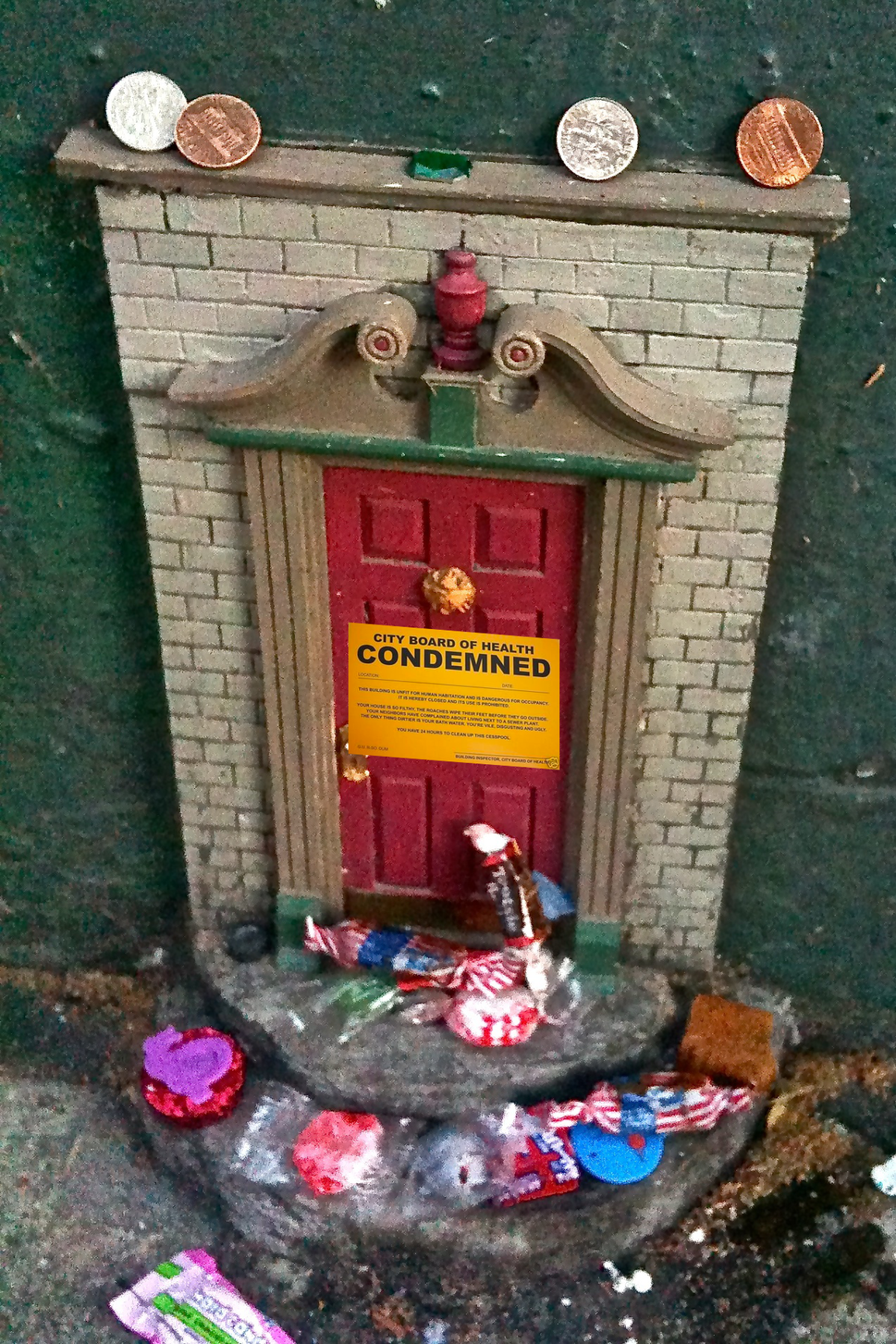Downtown Ann Arbor’s iconic fairy doors are visited by thousands of children every year, all of them hoping to catch a glimpse of the magical beings who use these tiny portals. Now, recent actions by Federal and State accessibility regulators have put the doors into questionable legal status, and they may be closed or require expensive work to remain open.
“The proliferation of Fairy Doors definitely raises accessibility issues that clearly violate State and Federal building codes.” Says Warren Pesstolsty, a mid-ranking Federal official instrumental in the investigation and complaint. “If they were human sized entrances, they would never get approval from any agency, let alone pass inspection.”
It seems that the main reason this inequity escaped regulatory notice for so long is because the doors are built for creatures generally invisible to adults. As is the story in so many cases, it is the voices of the truly marginalized unseen, creatures of folklore living with disabilities, that are now being heard for the first time.
“It’s like we were standing in the weeds, unable to fly, and shouting for help for centuries.” said Vernal Buttercup, a member of Fairies Living In The Shadows (FLITS), an advocacy group and party to the complaint (Their name has been changed to protect them from potential repercussions).
The government action is causing tremors throughout the dominant Fairy culture and professional community, including the Washington DC based Business Advocates for Diminutive Doors (BADD). At this point, the aftershocks promise to continue for years, for FLITS literature points directly to broader diversity and intersectional issues, such as access for giants, yeti, and other shadowy figures who, literally, can’t fit through the doors others have constructed.


